Summer fed cattle market fighting downward pressure
The 2019 fed cattle market is following the pattern set in 2018. Will that continue?
June 12, 2019
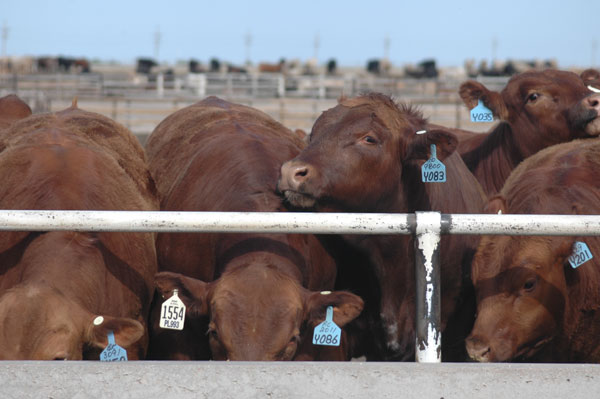
If you’re a market watcher, May probably went just about as you expected, at least based on last year’s market performance. Fed cattle prices ended April at $123-$124 per cwt.
But right on cue, downward pressure appeared as the market transitioned to June, the front-end contract at the CME. The market subsequently slipped back to mostly $120-$121 during the first full week of May, then to $117 and finished with the final two weeks seeing cattle sell for mostly $116. As expected, June started off on a softer note, giving up $2 from the previous week.
Nevertheless, the overall average across the five weeks of trade in May was roughly $118.50 – down a little more than $7 from the January-to-April average. That’s right in line with last year’s action during the same time frame. Fed trade averaged $124 between January and April and then slipped back to average $118 in May.
Therefore, thus far in 2019, the overall averages are running right in line with 2018. And if that’s any indication of what might happen going forward, there’ll be some further erosion to the downside.
And from there don’t expect a lot of action for the foreseeable future. That’s because 2018 summer prices lasted well into the fall: weekly trade chopped back and forth and was largely range-bound between $107 and $113 from June all the way through mid-November (Figure 1).
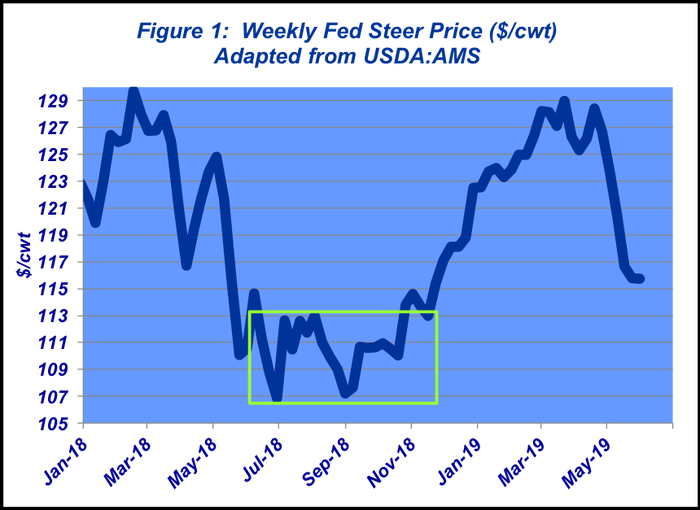
However, when it comes to year-over-year comparisons, the broader trends are right in line but there are some key nuances that are especially important. This year’s trade is of special interest: the 2019 spring market fought through some key elements and ultimately achieved favorable prices in comparison to previous years.
Lots of cattle on feed
First, there’s the consideration of larger numbers. Fed cattle marketings during the first four months totaled 7.02, 7.18 and 7.30 million in 2017, 2018 and 2019, respectively.
Correspondingly, the respective averages for fed trade were $124.66, $124.15 and $125.83. In other words, in the past three years, 2019 pushed through the highest total of fed cattle marketings but attained the best prices (Figure 2).
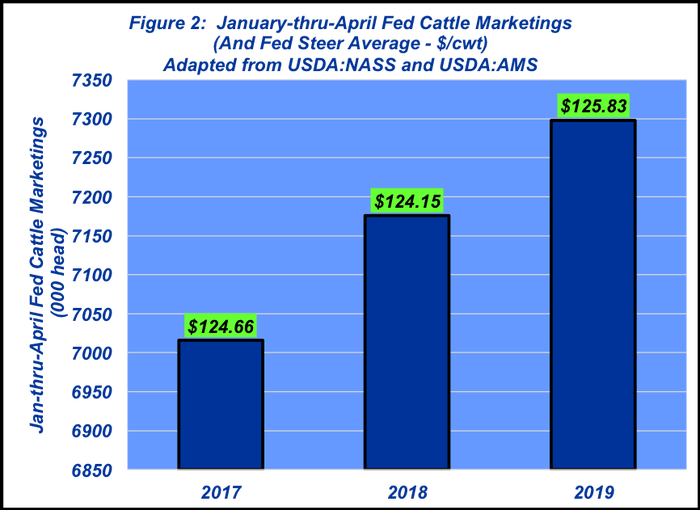
What’s more, that happened against a horrible winter. Weather not only hampered feeding conditions, it also hampered people traveling, shopping, dining out and being deliberate about firing up their grills.
That inherently pressures beef sales over the short-run. Nevertheless, wholesale beef values held firm in the face of bigger volume and managed to average $222 between January and April, versus $215 and $205 in ’18 and ’17, respectively (Figure 3). That’s a direct reflection of strong beef demand and helped boost fed prices along the way.
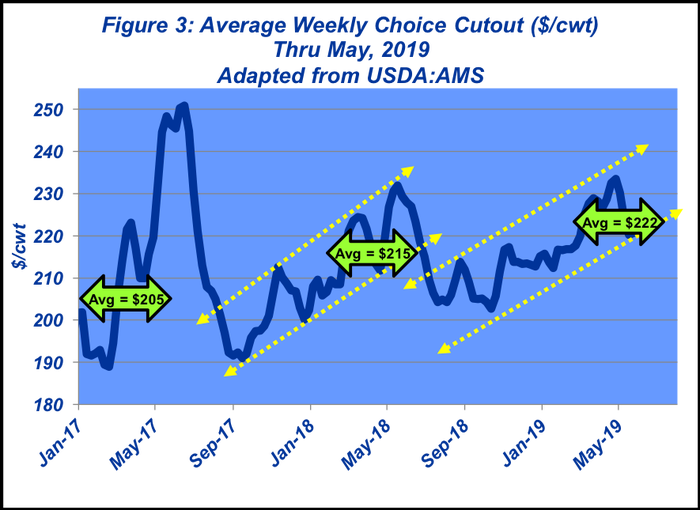
May’s Cattle on Feed report stayed within the theme of bigger numbers. Timely, consistent marketings are essential given the mix in the feeding sector. The on-feed mark is the largest for May in the series history (11.82 million head – exceeding last year’s previous record by 260,000 head). More important, the front-end continues to be sizeable: cattle on feed more than 120 days totaled 4.4 million head – representing an additional 420,000 head versus the five-year average.
As such, cattle feeders will NOT be rewarded by fighting the market. However, rising grain prices have reduced some incentive to do so.
Corn conundrum
No doubt, most readers are closely monitoring planting progress and its influence on the corn market. Huge uncertainties linger over this year’s corn crop. That exists on several fronts.
First, and most obvious, is concern about the number of acres that will actually get planted and/or acreage that needs to be replanted. USDA’s Prospective Plantings report indicated farmers intended to plant approximately 92.8 million acres of corn in 2019.
Clearly, we’ll fall well short of those intentions – the shortfall could prove massive. But it will be late summer or early fall before we get a real handle on planted acreage, especially when considering the number of acres that also need to be re-planted.
Meanwhile, late-planting coupled with challenging soil conditions will also negatively influence yields. That, too, will be an unknown that lingers well into late fall.
And finally, given the late nature of planting, total harvest percentage will also be vulnerable.
Bottom line: this year’s crop is loaded with uncertainty. Markets hate uncertainty – thus volatility will be the rule rather than the exception through the summer.
Feeder cattle
In the meantime, that influence has been duly felt in the feeder markets. Most notably, there’s been a key shift in the relative relationship between feeder cattle and deferred fed cattle prices (Figure 4).
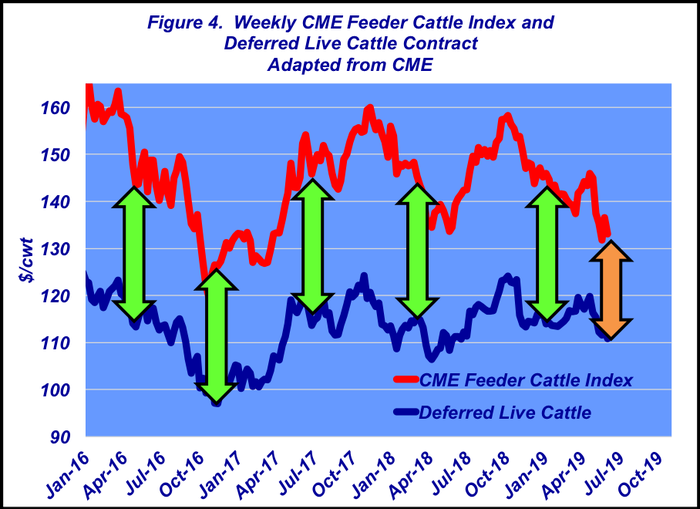
During the past several years, the CME feeder cattle index has consistently run about $30 ahead of the back end of the board – but because of rising grain prices (and general uncertainty) that spread has narrowed to the low $20s in recent weeks. In addition, the October feeder cattle contract has thus far retreated over $20 from the mid-April high at $160+.
Cow/calf producers need to watch this carefully in the weeks and months to come as they begin to think about making marketing commitments for the fall. The break in the feeder market brings to mind the importance of managing costs and taking a hard look at returns to management.
It also draws attention to the importance of investing time and resources into obtaining objective information and reviewing it carefully. There’s will always be something else tugging for your attention – but it’s an essential and worthwhile investment. That time and effort helps ensure sound, disciplined decision making – that’s especially important in trying times.
Speer serves as an industry consultant and is based in Bowling Green, Ky. Contact him at [email protected]
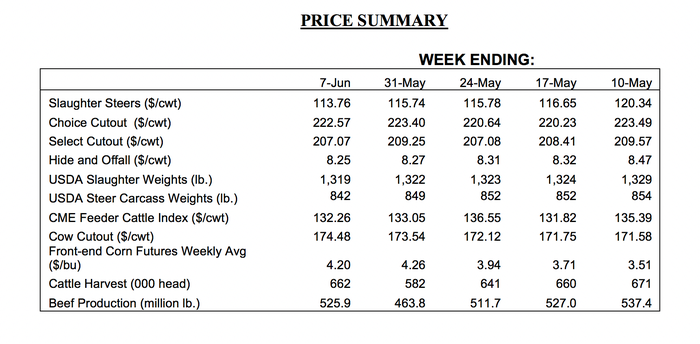
About the Author(s)
You May Also Like




.png?width=300&auto=webp&quality=80&disable=upscale)
